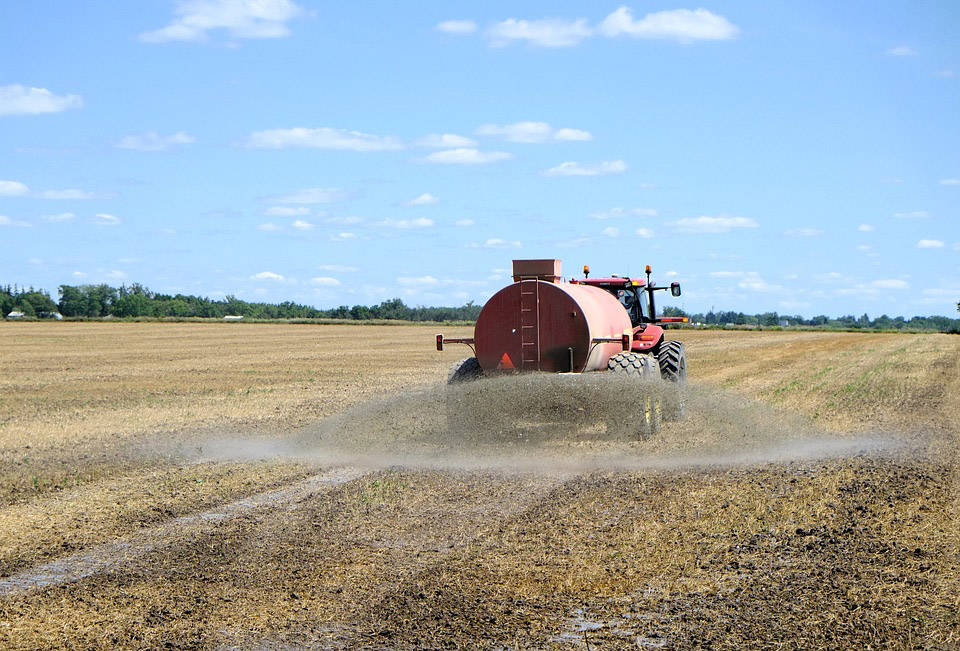We have compiled some essential facts about nitrate in water and hope to answer the most critical questions from our magazine readers.
What is nitrate, and why is nitrate in water a problem?
- Nitrates are among the water-soluble salts of nitrogen that occur naturally in soil.
- Nitrogen is essential for humans as well as animals and most plants. This drives protein formation in the body.
- Nitrate serves as a nutrient for plants. Therefore, it is often used to fertilise fields and thus enters the soil in unnaturally large quantities.
- Excreta from farm animals, such as cow dung, also contain nitrate. Therefore, areas and pastures heavily used for livestock are just as big nitrate problem areas as fertilised areas.
Nitrate in groundwater – how does it get there?
Groundwater sources below agricultural land are exposed to the most significant nitrate contamination. From a water protection point of view, the central aspect of the high nitrate concentration in the water is the intensive land use and the associated diffuse nutrient inputs by nitrogenous fertilisers.
Liquid manure as a fertiliser is not the only problem. Artificial fertilisers and improperly sealed silos are also causes of excessive nitrate levels in groundwater. In addition, fermentation residues from increasingly popular biogas plants are a factor, as these also increasingly end up on fields.
Nitrate is washed into groundwater by precipitation – the problem summarised:
- Plant organisms can use and utilise nitrate as a source of nitrogen.
- If too much nitrate is applied to fields and land, the plants no longer take up these surpluses, so the nitrate accumulates in the soil.
- Precipitation such as rain or snowmelt ensures this nitrate reaches deep soil layers.
- The water contaminated with nitrate thus enters the groundwater.
- In this way, the excess nitrate also enters rivers, lakes, and similar bodies of water.
- Depending on the region, our water is obtained from spring or surface water, but in most cases, from groundwater.
- For many treatment plants, it has so far been a problem to remove nitrate from drinking water altogether.
- Even small amounts of nitrate in drinking water can pose an enormous danger, especially for infants (cyanosis)!
When does nitrate in water become dangerous?
Nitrate in itself is not directly harmful to healthy and adult humans. However, there is the possibility that nitrate develops into nitrite under the influence of certain intestinal bacteria. It is also possible for nitrosamines to build, which are considered carcinogenic.
Test nitrate and other pollutants in tap water!
Is nitrate in water harmful to babies and toddlers?
Yes. Be careful with nitrate in the water for babies! Cyanosis, for example, is possible from too much nitrate. However, babies under six months are at risk if nitrate is in the water.
The consequence of nitrate poisoning can be cyanosis, which may be fatal. A water test should be carried out in every household.
Suppose nitrate develops into nitrite as a result of natural chemical processes. In that case, the resulting formation of chemical compounds can cause the red blood pigment to change, especially in babies up to about three months of age. As a result, the child’s blood can no longer transport sufficient oxygen, which can be fatal for infants. Accordingly, care must be taken to ensure that the water contains as little nitrate as possible, mainly when infants are provided with it. The law declares nitrate concentration in water below 50 milligrams per litre to be safe for infants.
If you want to test your drinking water for nitrates, you can find an appropriate water testing kit for babies in the IVARIO shop.
How do we consume nitrate? Is nitrate also in our food?
Root vegetables contain exceptionally high levels of nitrogen. Leaf lettuce also includes a high concentration of nitrogen. It is, therefore, through these plants that we consume the most nitrate. If vegetables are harvested in the fall or winter, they contain an exceptionally high nitrate concentration. In addition to vegetables, cured meat and drinking water are also significant sources of nitrate.
How to test nitrate in water?
You can buy test strips (e.g., at the pharmacy) to detect nitrate in water to get an approximate value. On the other hand, a laboratory analysis of the drinking water provides precise values of possible contamination and is recommended.
Is there a limit to the value of nitrate in water?
According to the drinking water standards, there may be 50 mg per liter of drinking water, otherwise the nitrate content in the water is considered too high.
Nitrate in water – well water is particularly at risk
Well water must be checked regularly!
If well water is not controlled, this can pose a particular danger to the water consumers (not only because of too high nitrate values). Nitrate from groundwater could thus theoretically enter drinking water unnoticed and cause long-term health complaints. For this reason, well operators, in particular, should have their own well water analysed and rule out the possibility of excessive nitrate concentrations in the water becoming a problem. Excessively high nitrate levels are a more present issue than generally assumed. IVARIO provides well water test kits for homes and businesses.
What can be done about nitrate in drinking water?
Appropriate tests are easy to carry out and provide certainty. This is because, unlike drinking water supplied by water suppliers through the public drinking water network, well operators themselves must test. This is especially true if third parties are provided with drinking water through the well water.
Boiling or similar methods cannot reduce the nitrate content of the water. Only elaborate water filters can remedy this situation.
In which regions is groundwater particularly at risk for nitrate?
In principle, nitrate contamination of groundwater is not limited to specific areas or regions. Problems can occur anywhere. However, regions with an exceptionally high level of agriculture generally have to contend with higher nitrate contamination of the groundwater.
In addition to the assumption that these differences in the nitrate values of the groundwater can be attributed, among other things, to the measuring methods and times and the choice of measuring points, the soil composition of the regions also plays a role, for example. It is, therefore, difficult to assess the extent of groundwater contamination in one’s region based on neighbouring areas, making it difficult to clearly assess the actual extent of contamination.
What does nitrate mean in the drinking water of animals?
Nitrate contamination can occur, especially in the case of grazing animals fed on overfertilised meadows or watered with water from wells or natural waters. These do not usually pose a drastic danger but can lead to diarrhoea. The drinking water of animals should, therefore, also be checked regularly.
How does nitrate in water affect drinking water quality?
In any case, water suppliers treat the groundwater so it is distributed to households in a harmless condition. However, due to the sometimes high levels of contamination, more extensive treatment steps are necessary here, the cost of which may impact the price of drinking water.
However, this does not apply to well owners, who are themselves responsible for complying with the limits laid down in the Drinking Water Ordinance.
In principle, having one’s own groundwater obtained through a domestic well tested is worthwhile. From a legal point of view, this applies in particular if the well water is distributed as drinking water to tenants or fellow residents. But even if the water is only used for your drinking water supply, it is worthwhile to have the water analysed for nitrate and heavy metals such as lead, copper or nickel and microbiological contamination (pathogens, germs, etc.).
A problem without a practical solution: Nitrate pollutes groundwater
The issue of nitrates in drinking water concerns water suppliers and consumers. Nitrate in water is currently a hotly debated topic. The cause: mainly the widespread and seemingly excessive overfertilisation by agriculture.
The reason for heated political discussions is the persistently high nitrate concentration in groundwater. Because nitrates in water can have severe consequences for consumers.
You may find several water test kits for nitrate in your water in the IVARIO shop.
Do you still have questions specifically about nitrate in drinking water? Or do you have another question concerning drinking water, well water or similar topics? We are looking forward to your comments!


